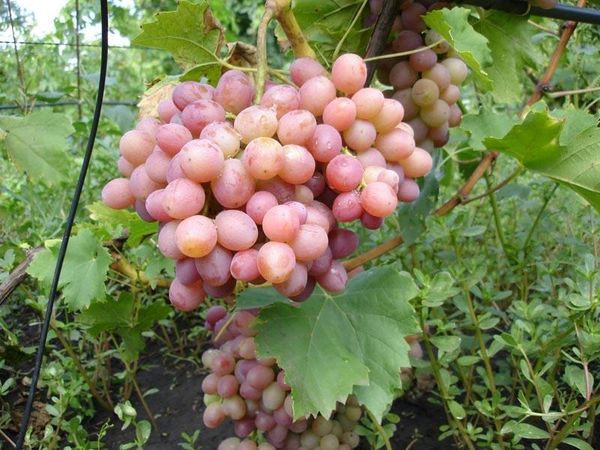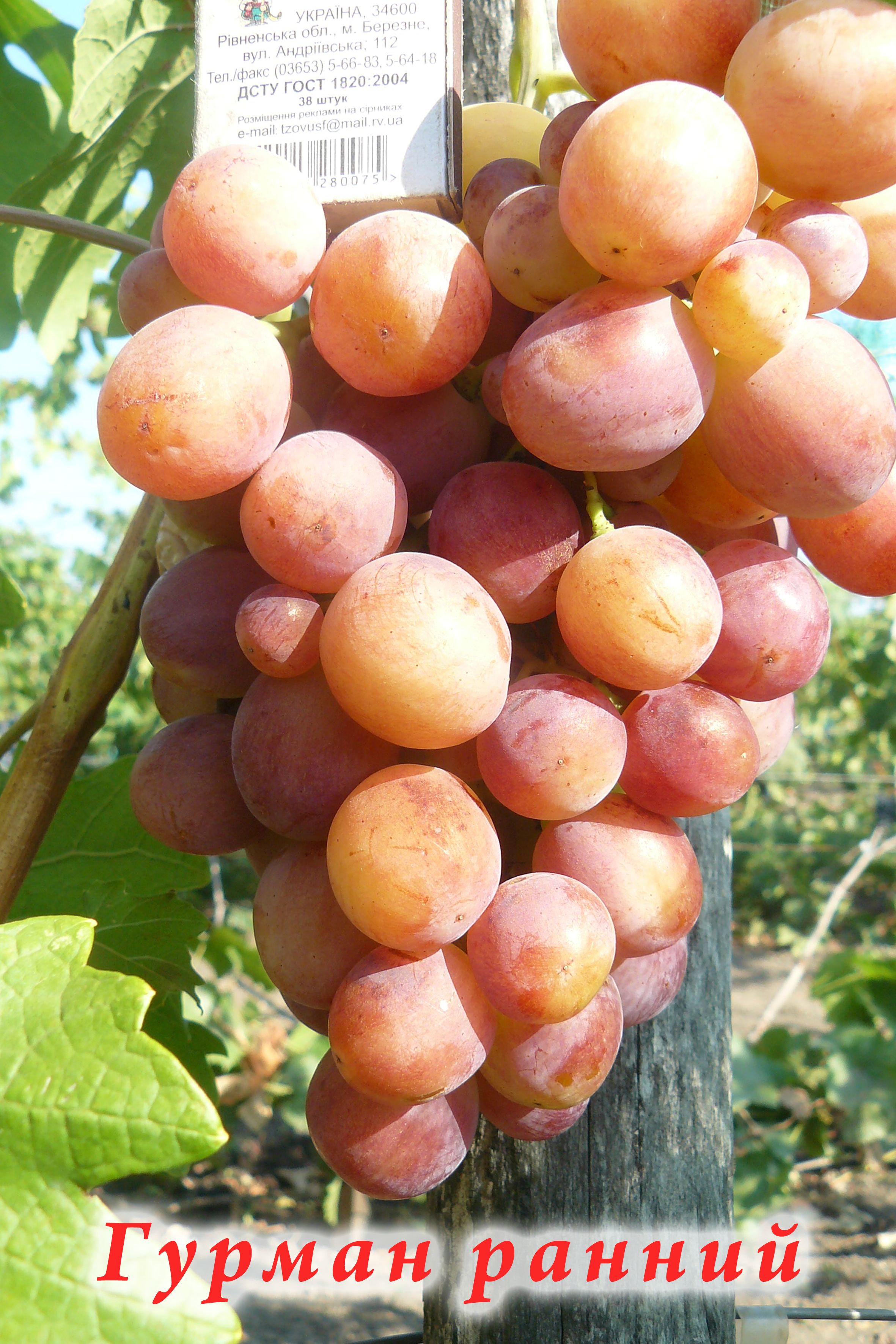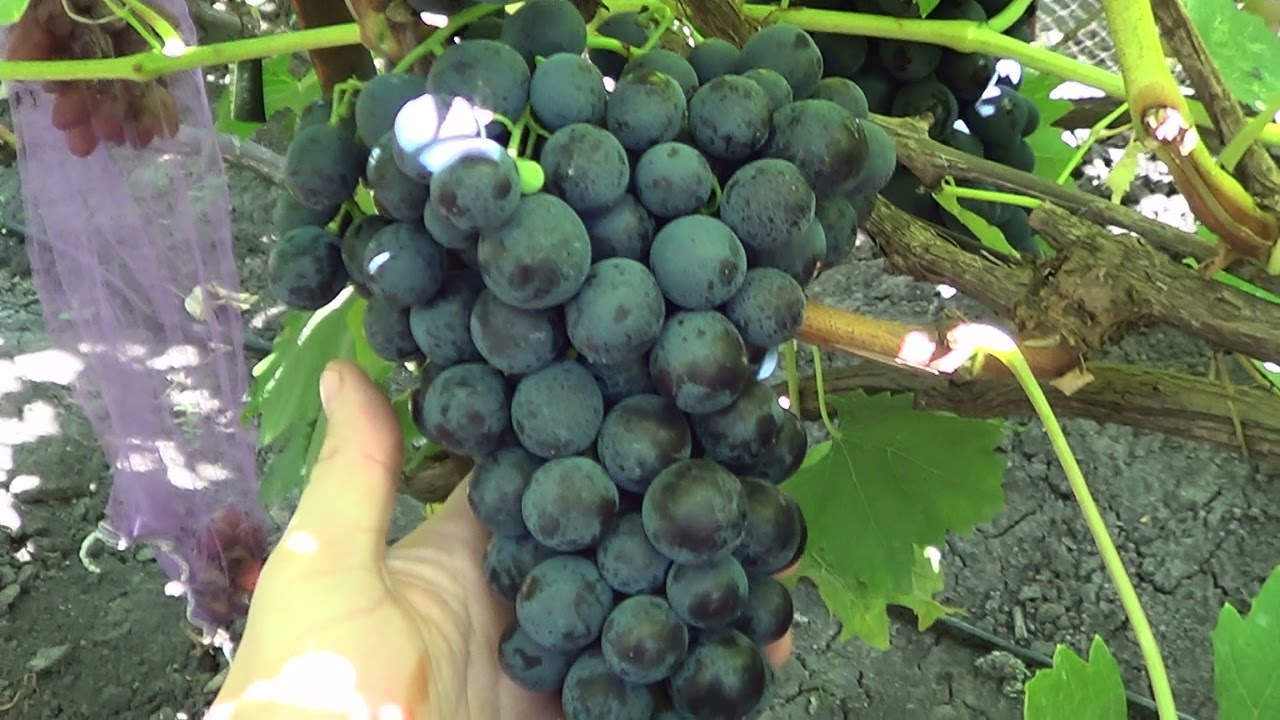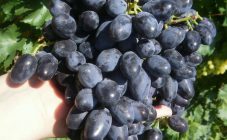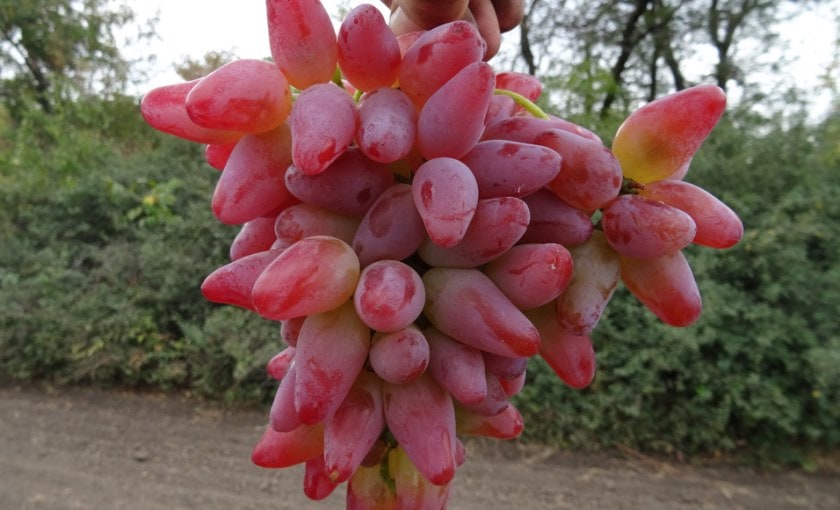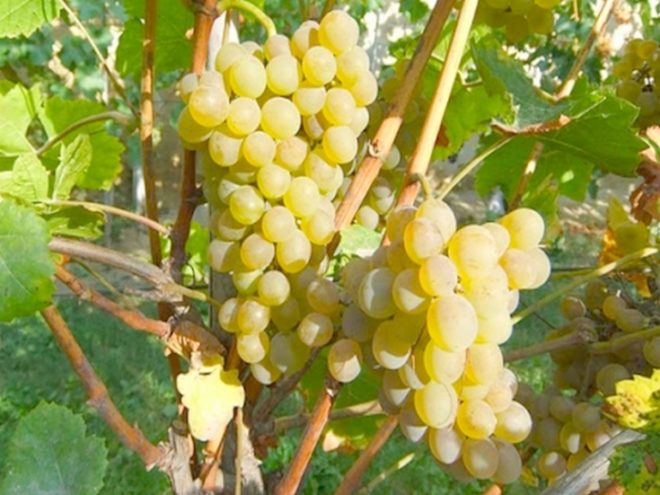Content:
In recent years, a new variety of table grapes Libya has become more and more popular. Experienced gardeners consider it a rather promising species, suitable for viticulture, both in their summer cottage and in industrial production.
The history of the appearance of the variety
The berry bush was bred by crossing two grape varieties - pink Flamingo and white Arcadia - by the famous Ukrainian breeder Vitaly Vladimirovich Zagorulko. The resulting hybrid was added to the official catalog of Ukrainian grape varieties in 2011. The Russian State Register included it only in 2014. The patent for ownership belongs to VNII Magarach. Libya grapes are recommended by experts for cultivation in the North Caucasus.
The culture has been tested on home plantations, farm fields, both in Ukraine and in Russia. Russian winegrowers also know other varieties of shrubs grown by a Zaporizhzhya researcher - Veles, Bazhena, Zabava, Nektariya, Plek, Sofia.
Description
The Libya grape variety is characterized by excellent taste, ultra-early ripening, attractive appearance of bunches, and excellent yield. The grape has a subtle nutmeg aroma that remains unchanged after harvesting for a month.
Mature shrubs are large, powerful, grow well. They have thick stems, strong trunks, and differ in leaf density. The tops of young shoots are light green in color. Over time, they take on a light brown color.
The first leaves located at the bottom of the bushes are solid, then they become wide, dissected into five lobes. Descent is not observed. As it grows, many shoots, stepchildren are formed. The culture blooms profusely. The flowers of the vine are small, bisexual, self-pollinating. Both main and reserve buds can bear fruit.
The grapes ripen quite early - 100-110 days (about three months) after the ovary appears. The berries are ovoid, spherical, oval in shape, up to 3 centimeters long and 2 cm wide.One berry weighs approximately 11-14 g.
The fruits of a bunch can be of different colors at the same time - yellow, as well as pink shades with purple tints. This is due to the uneven maturation process.
The length of the brush reaches 35 centimeters. Its weight ranges from 600 to 900 g. The weight of individual grooves can be more than 1.5 kilograms.
Features of the variety, positive characteristics
- This type of vine has good frost resistance. That allows it to be grown in the suburbs, in the middle lane. The plant can withstand temperatures of -21 degrees, provided there is a reliable shelter.
- Cut brushes retain their commercial qualities for a long time (30 days). The berries do not wither, do not crack, do not lose their elasticity.
- The harvest is stable, which surprises even seasoned gardeners. One bush can produce 25-30 kg. Careful care allows you to collect the first fruits in the third year.
- The culture is easy to transport.
Landing
The Libya variety reproduces in two ways:
- rooting cuttings;
- vaccination.
Method 1
- For the vineyard, they choose a warm, sunny place, reliably protected from cold winds. It is best if the bushes are fenced in by home buildings.
- Take a healthy seedling with two or three buds. The roots of the sprout must be intact. The cut point is green.
- The hole is dug out more than the root system three times. Fill the pit up to half with humus. Then put soil or sand.
- The seedling should be buried carefully. Two buds are left above the ground. Water abundantly. Use at least three buckets of water. Small shoots are tied to small pegs. Then they install strong supports - trellises.
Method 2
The stock is prepared in advance. The old plant is removed, and a small stump of 8–10 centimeters is left above the ground. The place of the cut is thoroughly cleaned, bumps and jags are removed.
The sanded stem is wiped off with a damp cloth. A small split is made exactly in the middle of the left trunk. The stalk is placed in a prepared place.
Everything is tightly pulled together with self-degradable material. The grafting point is coated with clay. It will retain moisture.
The culture of Libya is unpretentious, it can grow in the poorest soil. It only needs to be fertilized more often. The best option is considered to be light loamy soil or chernozem. The groundwater flow must be quite deep.
Growing up, leaving
- It is recommended to water at least twice a season. Before flowering, after flowering. If summer is dry, then more often.
- In late autumn or spring, the vine is mulched with humus, fed with organic matter, potassium-phosphorus compounds. Fertilizers are applied directly under the plants.
- The bush is periodically cut shortly into 2–6 eyes, and the excess ovary is pinched, and the stepsons are removed. Form a vine, leaving 3-4 fruiting arms.
- For the winter, the bush is covered. The vine is removed from the trellis. Remove all remaining leaves, fruits, cut off. Treat with fungicide. Lay on the ground, sprinkle with soil, cover with straw, polyethylene.
disadvantages
- grapes may be pale in color;
- fruits burst due to heavy rain;
- sometimes excessive wateriness of berries is noted. This happens from waterlogging, an excess of bunches;
- low culture resistance to mildew disease, powdery mildew.
The full potential of the Libya grape variety has not yet been fully revealed. However, the results obtained promise him excellent prospects for the future.
